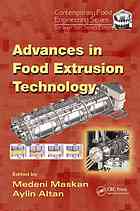

Most ebook files are in PDF format, so you can easily read them using various software such as Foxit Reader or directly on the Google Chrome browser.
Some ebook files are released by publishers in other formats such as .awz, .mobi, .epub, .fb2, etc. You may need to install specific software to read these formats on mobile/PC, such as Calibre.
Please read the tutorial at this link: https://ebookbell.com/faq
We offer FREE conversion to the popular formats you request; however, this may take some time. Therefore, right after payment, please email us, and we will try to provide the service as quickly as possible.
For some exceptional file formats or broken links (if any), please refrain from opening any disputes. Instead, email us first, and we will try to assist within a maximum of 6 hours.
EbookBell Team

0.0
0 reviews''Preface Eating and drinking foods are vital habits of human. During the centuries, different practical techniques and skills were developed by people all around the world to process foods. In recent years extrusion cooking, which is a specialized form of processing, has become a well established industrial technology, with a number of foods and feed applications. It is a high temperature, short time process being used increasingly in the food industries for the development of new products such as cereal-based snacks including dietary fiber, baby foods, pasta products, breakfast cereals, texturized protein food stuffs and modified starch from cereals. In addition to the usual benefits of heat processing, extrusion offers the possibility of modifying the functional properties of food ingredients and/or expanding them. Extrusion cooking as a continuous cooking, mixing and shaping process, is a versatile and very efficient technology in food processing. In the extruder, the food mix is thermomechanically cooked to a high temperature (usually in the range 100ʻC-180ʻC), pressure and shear stress are generated in the screw-barrel assembly. The cooked melt is then texturized and shaped in the die. Extrusion-cooked melts go from high pressure to low (atmospheric) pressure when they exit the die. This sudden pressure drop causes part of the internal moisture and the vapor pressure to flash off forming bubbles in the molten extrudate, resulting in the expansion of melt.''--Provided by publisher.